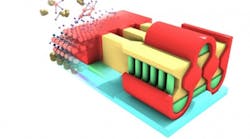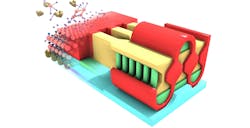A surprisingly small number of transistor technologies and semiconductor materials have served a relatively large number of analog and digital applications for many years, much to the concern of the Defense Advanced Research Projects Agency (DARPA).
Because of the importance of transistors for the generation and processing of signals at RF, microwave, and millimeter-wave frequencies—for such applications as communications, surveillance, signal intelligence (SIGINT), electronic warfare (EW), and electronic countermeasures (ECM)—DARPA has launched its Dynamic Range-enhanced Electronics and Materials (DREaM) initiative. DREaM is intended to encourage the exploration of new semiconductor structures and materials, with the aim of more efficiently generating and processing high-frequency signals for defense-related applications.
“The same basic transistor types have been dominant since their invention and we have been engineering the heck out of them for 50 years,” said Dan Green, a program manager in DARPA’s Microsystems Technology Office (MTO) and the overseer of the DREaM program. “We’ve gotten a lot out of that approach, but the focus on so few types of transistor technologies and just a few semiconductor materials also has fundamentally limited us in the RF world. With DREaM, we want to rethink all of that and imagine new possibilities.”
Participants in DARPA’s DREaM program will need to pursue novel semiconductor materials and device structures to achieve the agency’s goals of smaller, more linear, more efficient, wider-bandwidth next-generation high-frequency transistors. (Courtesy of DARPA)
DARPA’s desire for new transistor technologies is based on the need to process a growing number of wireless signals at RF, microwave, and even millimeter-wave frequencies. The overcrowding of electromagnetic (EM) signals has been well publicized in commercial markets. But it is also taking place in defense-related applications, with communications systems, various forms of radar, jammers, EW, and ECM systems all competing for available bandwidth at different frequencies. For a given application, such as a portable military radio, other applications will appear as noise in a congested EM environment.
As both commercial and military users look to higher, millimeter-wave frequencies and their available bandwidths, DARPA’s vision is for new transistor topologies that can provide the high gain and low noise figures at those higher frequencies to enable systems to operate effectively and with high efficiency, even when surrounded by the noise of the many other wireless applications. As DARPA has demonstrated with its involvement in many technology development projects, such as the development of gallium arsenide (GaAs) and gallium nitride (GaN) transistors, it is quite capable of turning dreams into realities.
DARPA’s DREaM program will involve industry companies in a quest for new transistors that overcome some of the limitations and tradeoffs of current devices—for example, in output power, frequency bandwidth, efficiency, and linearity—enabling the design and development of smaller, higher-power high-frequency systems. “Our goal is that DREaM transistors will transmit and receive the large and complex RF signals of the future, and they will do so in smaller packages while consuming minimal power,” Green noted. Advances in both semiconductor materials and device structures will be needed to achieve the DREaM program goals.


